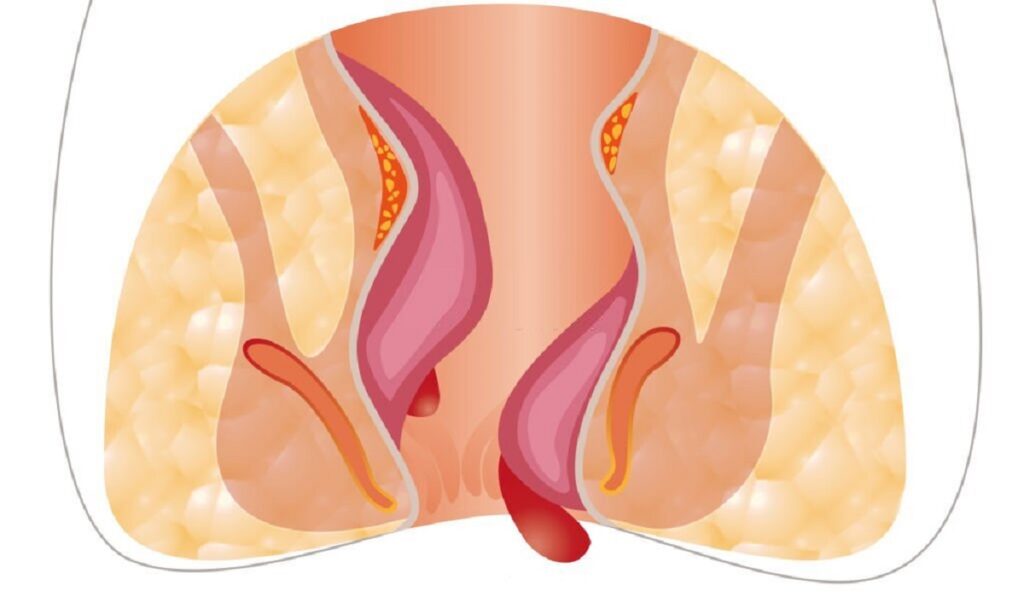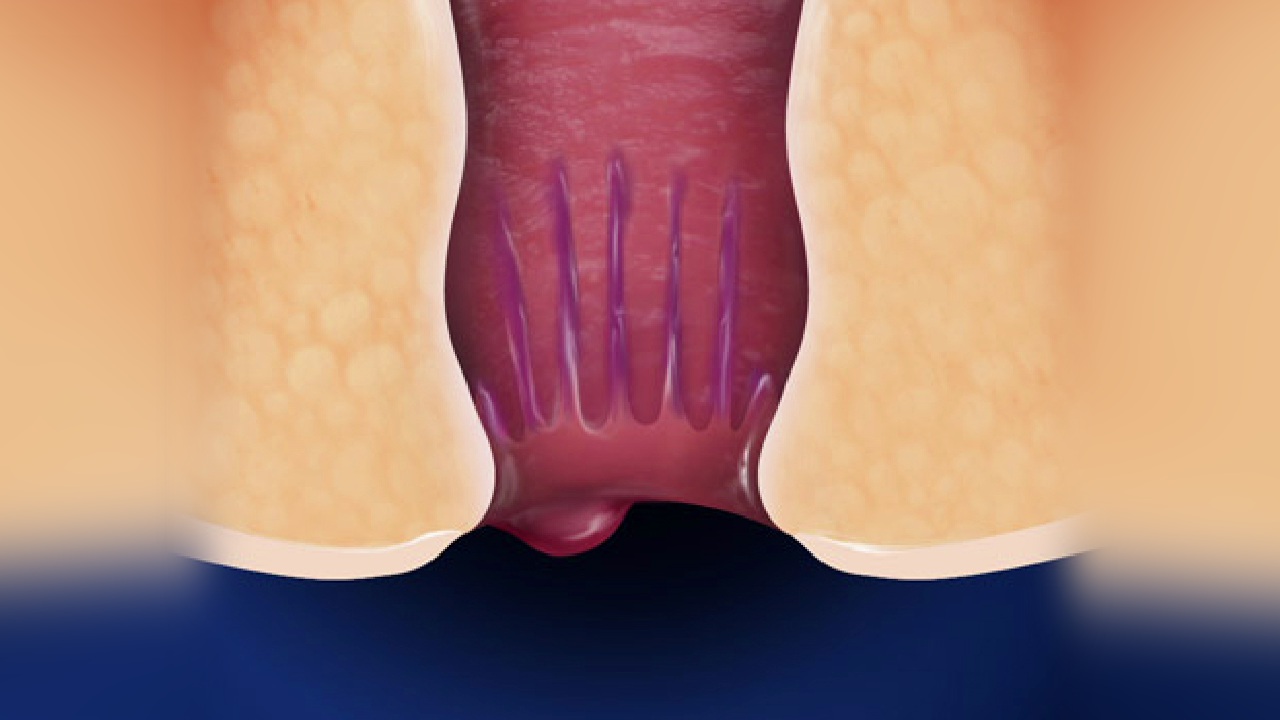What Do Piles Look Like On Your Bum? – Piles Overview
Have you ever thought about what do piles look like on your bum? Hemorrhoids, commonly known as piles, occur when clusters of veins in your rectum or anus get enlarged and protrude from their surrounding tissue.
Whenever these veins inflate, blood accumulates inside them, causing the veins to grow outward into the membranes surrounding your rectal and anal tissue.
This may become unbearable or unpleasant over time.
Hemorrhoids are classified into four categories:
- internal
- external
- prolapsed
- thrombosed
The majority of hemorrhoids are not considered to be a significant medical issue. You may not even be aware of their presence. Only around 5 percent of individuals who acquire hemorrhoids experience symptoms, and even fewer need medical attention.
Hemorrhoids are a regular occurrence. According to the National Institutes of Health, about one in every twenty Americans who rely on trusted sources is impacted by them.
Although not always necessary, you should seek medical attention as soon as possible if your hemorrhoids are causing discomfort or interfering with your typical activities or bowel movements.
You should also see your doctor if the symptoms have not subsided after a few days.
What Do Hemorrhoids Look Like?
Hemorrhoids are not usually evident due to their size. However, as they grow, they might appear as red or blue pimples or lumps on the skin.
Below is a description of the four basic forms of hemorrhoids, as well as their appearance:
Internal: – They are too deep in your anus to be viewed, which means they are not constantly visible. Protrusions from the wall of your anal canal or rectum are what they are. Internal hemorrhoids are lumps on the interior of the body, while more severe ones may produce a protrusion that is several inches long.
Prolapsed: – The condition in which internal hemorrhoid becomes swollen and elongated to the point that it protrudes from the anus. Less severe prolapsed hemorrhoids protrude from the anus when you strain, but they spontaneously retract when you relax. Still, more significant prolapsed hemorrhoids stay projecting from the anus when you restrain yourself.
External: – Appear as one or more lumps on the anus and in the surrounding area. You or a doctor can observe what is going on from the outside.
You might be suffering from single hemorrhoid or many hemorrhoids at the same time.
Internal Piles
Internal haemorrhoids are located inside the rectum. They are usually not serious and go away on their own.
Internal hemorrhoids may bulge and protrude from your anus at times. This is referred to as a prolapsed hemorrhoid.
Because there are no pain-detecting nerves in your rectum, you may not always feel internal hemorrhoids. However, if they expand in size, they might produce symptoms such as:
discomfort or agony
Itching, burning, bumps, or swelling around your anus
Feces passing through your rectum can irritate an internal hemorrhoid as well. This may result in bleeding, which you may see on your toilet paper.

Consult your doctor if an internal hemorrhoid causes severe pain or discomfort, or if you develop rectum bleeding. Learn more about therapies by reading on.
If you’re experiencing severe discomfort during bowel movements, it might be due to an abscess or fissure in the anus or rectum rather than a hemorrhoid.
External Piles
External haemorrhoids form on or near your anus. They are not usually apparent, although they do sometimes develop lumps on the anal surface.
External haemorrhoids are typically not a major medical problem. However, if they create pain or discomfort that interferes with your everyday life, see a healthcare expert.
External haemorrhoids have symptoms that are similar to internal haemorrhoids. However, since they are on the outside of your rectal region, you may experience greater pain or discomfort when you sit, undertake strenuous activities, or have a bowel movement.
When they expand, they become more apparent, and the blue tint of the dilated veins is seen under the anal skin surface.
Consult your doctor if you are experiencing pain or discomfort as a result of an external hemorrhoid.
Prolapsed Piles
Internal haemorrhoids prolapse when they enlarge and protrude from your anus. A prolapsed hemorrhoid may be graded by a doctor depending on how far it protrudes:
Grade I: There is no prolapse.
Grade II: Prolapsed, but will retract naturally. These will only prolapse if you apply pressure on your anal or rectal region, such as straining while having a bowel movement, and will then return to their natural position.
Grade III: Prolapsed and must be pushed back in yourself. These may need treatment to prevent them from becoming too painful or infected.
Grade IV: Prolapsed and cannot be pushed back in without excruciating pain. These are generally managed to avoid pain, discomfort, or subsequent consequences.
Prolapsed haemorrhoids appear as bloated red lumps or pimples protruding from your anus. If you study this region with a mirror, you may be able to see them. Prolapsed haemorrhoids may produce just the protrusion or they may cause pain, discomfort, itching, or burning.
In certain circumstances, surgical treatment may be required to remove or repair a prolapsed hemorrhoid so that it does not cause discomfort or difficulties.
Thrombosed Piles
A thrombosed hemorrhoid has a blood clot (thrombosis) inside its tissue. They may manifest itself as lumps or swelling around your anus.
Thrombosed haemorrhoids are a kind of hemorrhoid complication in which a blood clot develops.
Blood clots may form in both internal and external haemorrhoids, and the following symptoms may occur:
- intense pain and itchiness
- swelling and redness
- bluish color around area of hemorrhoid
Consult your doctor as soon as you feel any increase in discomfort, itching, or inflammation around your rectal and anal areas. Thrombosed haemorrhoids must be treated as soon as possible to avoid issues caused by a lack of blood flow to your anal or rectal tissue.
What Causes Hemorrhoids?
The dilation of the veins may be caused by anything that exerts pressure or tension on the anus or rectus muscles. Some of the most prevalent causes and risk factors are as follows:
- Possessing an excessive amount of weight
- Having to stretch repeatedly during bowel motions
- If you’re experiencing diarrhea or constipation
- Being unable to have regular bowel motions
- Sitting for an extended period
- The state of being pregnant or the act of giving birth
- Having an inadequate intake of dietary fiber
- Consuming an excessive amount of laxatives
- When you get older, your tissues lose their strength and suppleness.
Internal hemorrhoids may develop into prolapsed hemorrhoids if you continue to engage in any of the behaviors that may have contributed to the development of your hemorrhoid in the first instance.
A higher risk of thrombosis exists in external hemorrhoids, yet no single risk factor has been identified as a cause of this condition.
How Are They Diagnosed?
Your doctor may do one or more of the following tests to check for hemorrhoids in the anal or rectal area:
- Taking a look at the anus or the rectum Through a visual examination, a doctor will most likely be able to determine if the hemorrhoid is external or prolapsed inside.
- Performing a digital rectal examination. Anus or rectum will be palpated by the doctor using their fingers, protected by a slippery glove, to check for evidence of hemorrhoids.
- Using an imaging scope to take pictures. This will allow them to inspect the interior of your rectum for internal hemorrhoids while you are lying down. They’ll normally inject a tiny tube into your rectum, with a light attached to one end of it. An anoscope or a sigmoidoscope may be used to make this diagnosis, among other instruments.
What Do Piles Look Like On Your Bum?
Hemorrhoids appear as bloated, red lumps or bumps that protrude from the anus (groin). If you study this region with a mirror, you may see what I am talking about.
Prolapsed hemorrhoids may present with no apparent symptoms other than protrusion, or they may produce pain or discomfort, itching, or burning when pressed against the skin.

If you begin to experience pain and discomfort around your anus, particularly while sitting or having a bowel movement, see a healthcare practitioner right once.
If your symptoms intensify unexpectedly, get medical assistance right once, particularly if they interfere with your normal activities. Here are some signs and symptoms to be on the lookout for:
- You are experiencing severe itching around your anus
- Ablaze around your anus
- Lumps or swelling around your anus that are evident
- Darkening of your skin that is blue in hue around the swelling

What Can Be Mistaken For Piles?
Some additional illnesses have symptoms that are comparable to haemorrhoids. As a result, if your symptoms persist for more than a week, see a healthcare expert.
Some disorders, such as haemorrhoids, may also cause rectal bleeding. These are some examples:
- colorectal cancer
- ulcers
- gastrointestinal infections
- inflammatory bowel disease (IBD), like ulcerative colitis and Crohn’s disease
However, unless the bleeding happens between your rectum and anus, blood from your digestive system generally looks dark in your faeces. If you see bright red blood on the toilet paper after wiping, it is most likely the result of a hemorrhoid or anal fissure.
Anal fissures and anorectal abscesses are the most common causes of intense discomfort during a bowel movement, however they might be mistaken for a hemorrhoid.
Anal warts are a form of genital wart that might resemble a lump on the anus. They may itch and bleed in the same way as external haemorrhoids do.
Because many problems might be misdiagnosed as haemorrhoids, it’s important to consult a doctor for a proper diagnosis.
What Are Possible Complications Of Hemorrhoids?
Hemorrhoid complications are uncommon. If they occur, they may include:

- Strangulation. Arteries that carry new blood to the hemorrhoid might get clogged, preventing blood flow to the hemorrhoid. This can result in excruciatingly painful and unbearable pain.
- Anemia. When haemorrhoids bleed excessively, it may cause tiredness, shortness of breath, migraines, and disorientation due to blood loss.
- Prolapse. When you sit or have a bowel movement, prolapsed haemorrhoids might cause pain or discomfort.
- Clots of blood form. Thrombosis is more likely to occur as a result of an exterior haemorrhage. Blood clots may cause excruciating discomfort and itching.
- Infection. Bacteria may enter bleeding haemorrhoids and infect the tissue. Untreated infections may sometimes result in significant consequences such as tissue death, abscesses, and fever.
When Should I See A Doctor?
Consult a doctor if you begin to have pain and discomfort around your anus, particularly while sitting or having a bowel movement.
If your symptoms increase unexpectedly, get emergency medical assistance, particularly if they interfere with your normal activities. Here are some indications to look out for:
- feeling incredibly itching in the vicinity of your anus
- burning in your anus
- apparent tumours or enlargement around your anus
- blue colouring of your skin around swollen regions
Outlook
The most of the time, you won’t suffer any apparent symptoms, and consequences are quite uncommon when you have haemorrhoids. However, haemorrhoids may be annoying and even painful.
Hemorrhoids, whether they are internal or external, that do not thrombose or prolapse have a greater chance of healing without producing any symptoms or consequences.
It is considerably more probable that you may experience pain or have an increased risk of problems if you have prolapsed or thrombosed haemorrhoids.
If you are experiencing pain and discomfort from your haemorrhoids or if you see any indications such as bleeding or prolapse, you should seek immediate medical assistance.
When haemorrhoids are treated promptly, there is a greater likelihood that the condition will resolve itself without resulting in any further difficulties.
